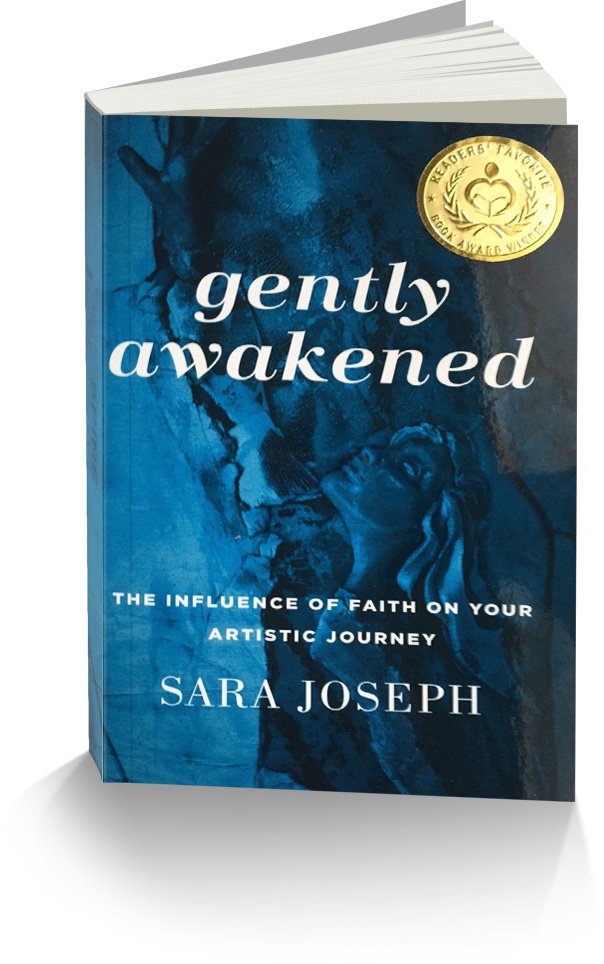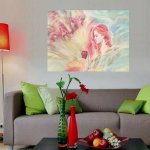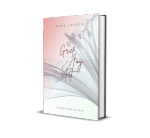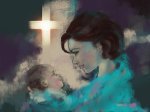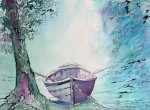Relief Sculpture of Passion
Relief sculpture of a kind that is commonly called intaglio is what this inspiring story is about. This is an account of a joyous, artistic collaboration.
It is a work that combined words and images in passionate extravagance. Yet it was a work of no repute. No lengthy critiques or dissertations about its artistic merits have ever been written. The story of this relief sculpture was rather casually embedded in a book shared by a friend. I've included links to them and also to the story of Yun's son. These books will deeply impact your journey as a believer in Jesus Christ and I could not recommend them more highly.
Buying them through my website will help me since I am an affiliate, so if these books seem intriguing please purchase them from here.
The relief sculpture of this story has all the qualities of a great work of art, despite its lack of worldly acclaim. Contrary to what you might think it is not perfect in form, line or color. It probably breaks every design principle.
Huang, whose story this is, would perhaps chuckle in amusement, if he ever read this, although the chances of that happening are non existent. I am designating him as the Artistic Director of this collaboration.
Sometime in 1984, Huang shuffled into the cell of a bleak Chinese prison, in shackles. Raw flesh and white anklebones were visible beneath his chains, because he used to frequently jump up and down in desperation. Despite these restraints he had a reputation that preceded his arrival.
He was violent and suicidal, a man who had taken many lives - a man no one dared approach. Although bound, no one ventured too close unless they wanted their nose bitten off, something he had done before. Filthy and angry, he was more an animal than a man. He had been treated as such for most of his life.
But that was about to change. Among the prisoners in this cell was a quiet, powerful leader named Yun, guilty of the "crime" of planting innumerable underground churches in communist China. Unlike the previous cells that Huang had been in, the prisoners in this cell were expecting him.
They welcomed him, to his amazement, as if he were a celebrity. Yun had convinced the other prisoners that Huang was beloved to Jesus. He was to be shown the dignity due any child of God.
“For as you do it unto the least of these, you do it unto me.” Mat 25:40
Since the sole objective of the prisoners in the cell was to please Jesus, who had transformed their own lives, their service to Huang was genuine and heartfelt. His wounds were cleaned with their dirty bedding and they generously shared their meager food and water. Their kindness penetrated the hardened heart of this brutal criminal. Huang was then told about the love of Jesus.
The tangible demonstration of this love washed over him like a mighty torrent, stripping him of all his anger, disappointment and hatred. Huang became Huang Enguang (Huang Grace and Light). In the place of a violent criminal, there grew a man filled with joy and purpose.
But what purpose could there be for a man destined to be executed? Huang Enguang was eager to find out. Yun taught him all that he knew of the Bible. How could he, Huang, make the most of his last days on this earth?
There burned in him a passionate desire to express his joy. That is how this collaborative artistic endeavor was launched.
At Huang’s instruction, the prisoners carved into the wall of the cell a relief sculpture that took days to accomplish. The tools had to be heaven sent – they were odd shards of glass and rusty nails, discovered on their few trips outdoors.
Since Huang was unable to actually do the carving, the other prisoners painstakingly followed his instructions, carving first a cross. It was followed by a drawing of the world - then a grave with a gravestone proclaiming Huang’s new name, some verses of scripture… Odd bits of joyful declarations like "The Prodigal has Returned”, “In tribulation, trust the Lord”... followed.
And so it went— until all four walls were filled. The creative energy and excitement in that cell must have been dynamic.
Art was being created for one of the reasons for which God gave it to us – to exult - as an explosion of unbridled joy!
This
relief sculpture, carved in raw passion, faced the potential threat of
all genuine art – the threat of discovery, destruction by a hostile,
opposing force and ultimately oblivion.
It should come as no surprise that this relief sculpture also saw the final success that God intends for every work created with the same humility and passion. No, not the success that comes with the accolades of "experts", nor the fame and monetary reward that declares its validity.
Instead, this relief sculpture stood the test of time in an unusual way – long after Huang Enguang was executed. It even endured long after the other prisoners in that cell with him were either discharged or killed for their faith.
This relief sculpture changed the lives of hundreds of inmates who followed Huang.
They spent countless hours in that cell, drawing comfort from being in its presence. The four walls that were so enthusiastically carved still speak today. Prisoners who eventually escaped that cell gratefully told of their hearts being moved, their repentance prompted by those walls and the birth of new, free lives with Jesus.
While I would never wish for you to see this relief sculpture in person, I hope that the lessons found in this story will shape your creative decisions.
Art created in genuine emotion in humility can be used by God for eternal impact, usually in ways that are completely unforeseen when created.

